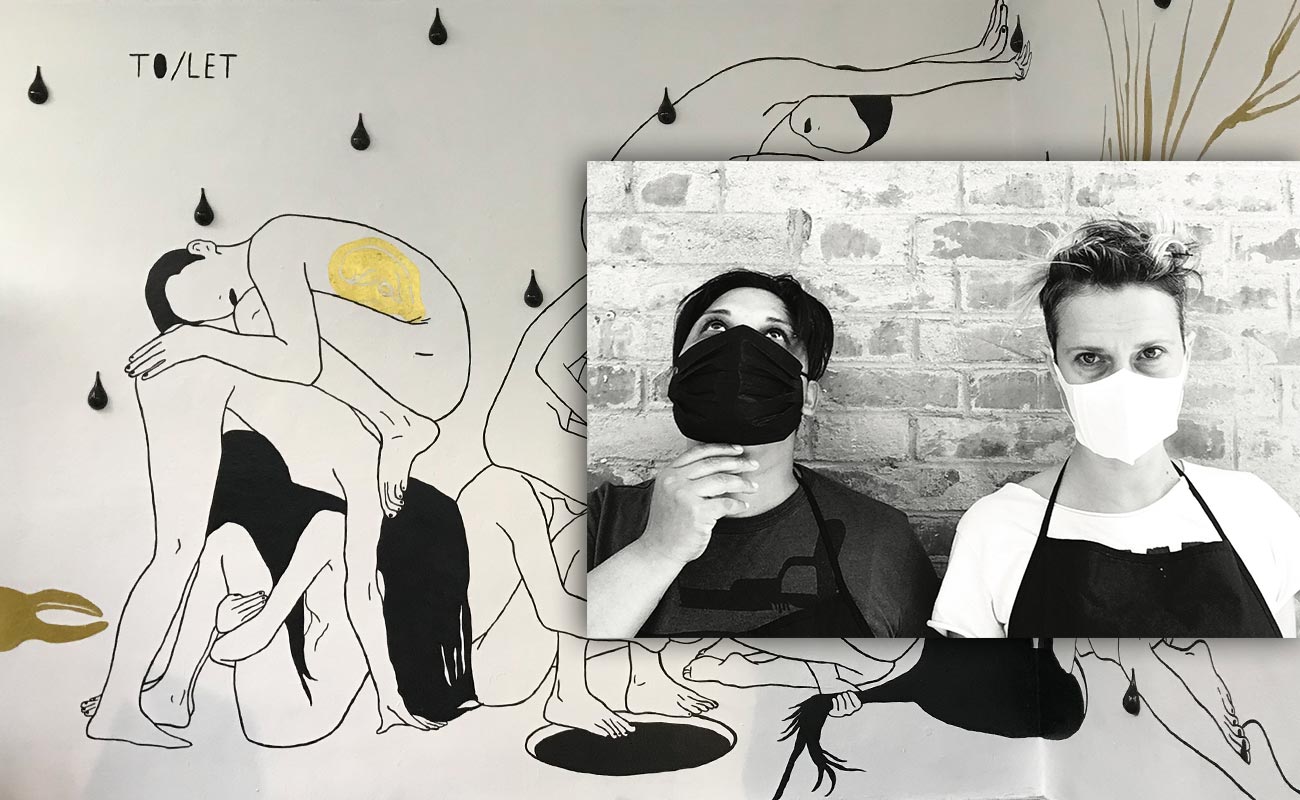TO/LET over the years have participated in various independent festivals, in Italy and in Europe, and in several solo and group exhibitions, among the most important La giovane Italia, Officina Italia 2, and Premio Michetti curated by Renato Barilli. They often relate to architectural space in a physical and sensory way, feeling free to expand beyond the boundaries and limits.
The art critic Renato Barilli spoke about them in this way: "Affinities can be found with all the artists who, like them, ignore limits, fences, boundaries, and feel free to expand like an oil stain, to spread. Reference can be made to the great South African William Kentridge, especially when he adorned the walls of the Tiber with his mysterious icons, suspended in a brilliant play between positive and negative. Or one can invoke Keith Haring, who, just like Sonia and Elisa, knows no boundaries to his work, expands it, lengthens it, taking care at the same time that the various elements connect with each other, come together, so to speak, in a rope team, which is also a characteristic that our two always make sure to ensure."
In 2011 they founded eLaSTiCo, a cultural association and collective of artists operating between visual art and music production, and since 2013 they have been among the founders, curators, and organizers of CHEAP Street Poster Art, a public art project.
Let's get to know them better through this interview.


























